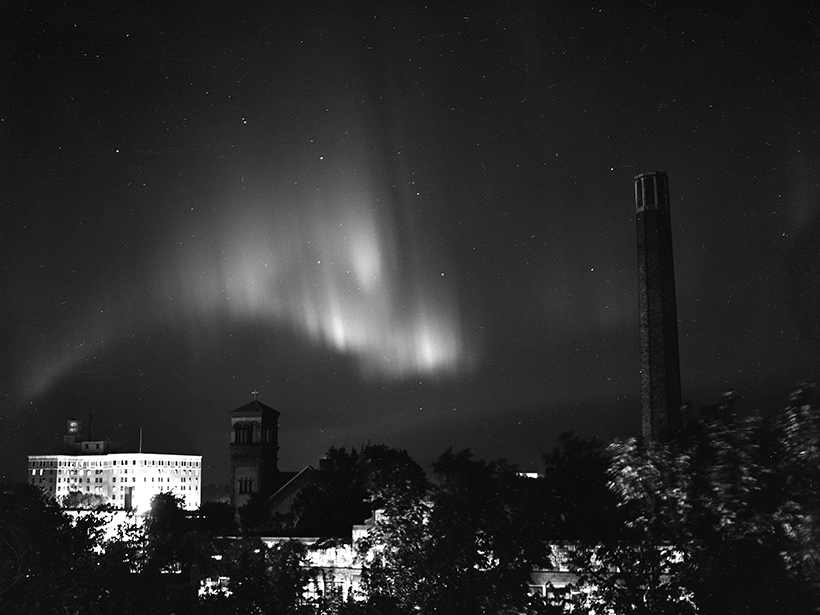Seventy-five years ago next week, a massive geomagnetic storm disrupted electrical power, interrupted radio broadcasts, and illuminated the night sky in a World War II battle theater.
J. J. Love
Posted inFeatures
Aurora Painting Pays Tribute to Civil War's End
Frederic Edwin Church's 1865 arctic landscape, Aurora Borealis, is a beautiful depiction of nature. It might also be a memorial reflection on the end of the war.
Posted inFeatures
Magnetic Storms and Induction Hazards
Electric fields induced in the Earth's lithosphere during magnetic storms can interfere with the operation of electric power grids. Scientists are working to understand this multifaceted hazard.



